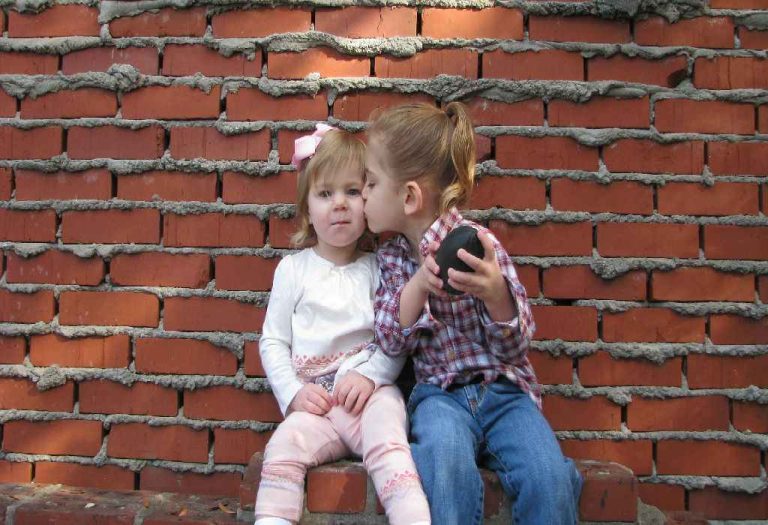Teaching Your Toddler To Ask Simple Questions
Teaching young children to ask questions requires patience and perseverance. You have to be repetitive so your child can learn how to pose queries. Here are some suggestions for things you can do to make your child ask questions and stimulate his curiosity.
Questioning involves a very high level of thinking. Often, questioning minds are very intelligent minds. Posing queries broadens a child’s horizons and helps him gain more knowledge about his environment. According to a survey, young children, on average, ask about 228 questions a day from their mothers! Toddlers begin by asking one-word questions with a rising intonation at the end, such as ‘Mommy?’ for ‘Where is mommy?’ With encouragement and guidance, they can progress to asking more complex queries. So, read on about teaching a toddler to ask questions.
When Do Toddlers Start Asking Questions?
Generally, toddlers first ask ‘What’s that?’ at the age of 15-18 months, followed by ‘where’ questions and then ‘why’ questions, which are never-ending! Children begin to ask ‘what’ questions around the age of 2.5 to 3 years. The endless ‘who’ and ‘why’ questions begin around the age of 3. Other questions like ‘May I’ or ‘Can I’ begin when you start teaching your child etiquette and manners.
How to Teach a Toddler to Ask Questions?
Teaching toddlers to ask questions is crucial for their cognitive development and language skills. Here’s how you can teach your little one to ask questions.
1. Asking ‘What’
The key to teaching your child language and how to speak is repetition. Keep repeating questions such as ‘What’s that?’ to him, and soon, your toddler will be imitating you.
2. Asking ‘Where’
To teach your child ‘Where’ questions, play games like hide and seek. You can hide toys and ask your toddler to look for them by posing questions like ‘Where is Teddy?’ You could also involve the entire family in a fun game of hide and seek. Your child can be the ‘den’ and look for everyone while asking where each person is.
3. Asking ‘Who’
To encourage your toddler to ask questions like ‘Who’s there?’ or ‘Who is that?’, use his toys and have them ‘knock’ on the door of a doll house or on his room door. You can also say, ‘Who’s there?’ a few times when you hear a knock and encourage your child to do the same.
4. Asking ‘How’
Foster problem-solving skills by encouraging your toddler to ask “How” questions. For example, when playing with building blocks, encourage him to ask, “How can I make this tower taller?” This promotes critical thinking and creativity in finding solutions.
5. Keeping Silent and Prompting
At times, silence is the best teacher. Keep a new object in front of your child and stay quiet. Say nothing about the new object and wait. The silence may prompt your child to ask questions like ‘What is this?’
Younger children tend to ask questions without using proper words. In such a situation, ask the question you think your child may have been asking. This will help him develop questioning skills.
How to Respond to Toddler Questions?
Responding to toddler questions is crucial for their learning and development. It helps foster their curiosity and language skills, encouraging them to explore the world around them. Here are some effective ways to respond:
1. Acknowledge and Validate
When your toddler asks a question, acknowledge their curiosity and validate their inquiry. Respond positively even if the question seems repetitive or simple. For example, if they ask, “Why is the sky blue?” you can say, “That’s a great question! The sky looks blue because…”
2. Encourage Thinking
Instead of providing direct answers all the time, encourage your toddler to think through their questions. Ask them follow-up questions like “What do you think?” or “How do you think that works?” This promotes critical thinking and helps them develop problem-solving skills.
3. Use Simple Language
Tailor your responses to your toddler’s level of understanding. Use simple language and concrete examples to explain concepts. Avoid using overly technical or abstract terms that might confuse them. For instance, when explaining why leaves change colour in autumn, you could say, “Leaves change colour because the weather gets cooler, and they stop making green chlorophyll.”
FAQs
1. What should parents do if they don’t know the answer to their child’s question?
It’s okay for parents to admit they don’t know the answer. They can use it as an opportunity to explore together, look up information, or encourage their child to research or ask someone else who might know.
2. What types of questions should parents expect from toddlers and preschoolers?
Parents can expect a range of questions that explore cause-and-effect relationships (“Why is the sky blue?”), seek explanations of daily routines (“When do we eat lunch?”), inquire about their surroundings (“What’s that sound?”), or explore emotions and social interactions (“Why is she crying?”).
3. How can parents balance answering questions while promoting independent problem-solving skills in children?
Parents can strike a balance by encouraging their children to think through their questions before providing an answer. They can ask follow-up questions that encourage critical thinking, suggest ways to find answers independently (like looking in books or experimenting), and offer opportunities for hands-on exploration and discovery. This approach fosters both curiosity and problem-solving abilities in children.
Teaching questioning skills to toddlers requires a lot of patience. Don’t get frustrated or angry when your child asks questions. It will only deter him from coming up to you looking for answers and will also quash his curiosity. Create an environment that piques his curiosity. Teaching him how to question and then answer the same imparts a sense of confidence. It’s okay not to have all the answers, but let your child ask questions as much as he wants to.
References/Resources:
1. Chouinard. M; Children’s questions: a mechanism for cognitive development (Monographs of the Society for Research in Child Development); National Library of Medicine; https://pubmed.ncbi.nlm.nih.gov/17394580/
2. Ruggeri. A, Walker. C, Lombrozo. T, Gopnik. A; How to Help Young Children Ask Better Questions? (Developmental Psychology); Frontiers; https://www.frontiersin.org/journals/psychology/articles/10.3389/fpsyg.2020.586819/full; January 2021
3. Newton. D, Newton. L, Abrams. P; A Study of Children’s Classroom Questions in Relation to Elementary Science Teaching; International Journal for Talent Development and Creativity; https://files.eric.ed.gov/fulltext/EJ1296690.pdf
4. Murray. J; Any questions? Young children questioning in their early childhood education settings (European Early Childhood Education Research Journal); Taylor & Francis Online; https://www.tandfonline.com/doi/full/10.1080/1350293X.2022.2026436; January 2022
5. Ronfard. S, Zambrana. I, Hermansen. T, Kelemen. D; Question-asking in childhood: A review of the literature and a
framework for understanding its development (Developmental Review); Science Direct; https://www.platformsamenonderzoeken.nl/wetenwatwerkt/wp-content/uploads/sites/3/2021/01/Question-asking-in-childhood.pdf
6. Jirout. J, Klahr. D; Questions – And Some Answers – About Young Children’s Questions (Journal of Cognition and Development); Carnegie-Mellon University; https://www.cmu.edu/dietrich/psychology/pdf/klahr/PDFs/questions-and-some-answers-about-young-children-s-questions.pdf; October 2020
Also Read:
Teaching Planning Skills To Toddlers
How to Communicate with Toddlers?
Teaching Toddlers to Count Numbers: 1 to 10
Teaching Toddlers to Identify People By Name
Teaching Your Toddler The Concept of First and Last Names
Was This Article Helpful?
Parenting is a huge responsibility, for you as a caregiver, but also for us as a parenting content platform. We understand that and take our responsibility of creating credible content seriously. FirstCry Parenting articles are written and published only after extensive research using factually sound references to deliver quality content that is accurate, validated by experts, and completely reliable. To understand how we go about creating content that is credible, read our editorial policy here.























